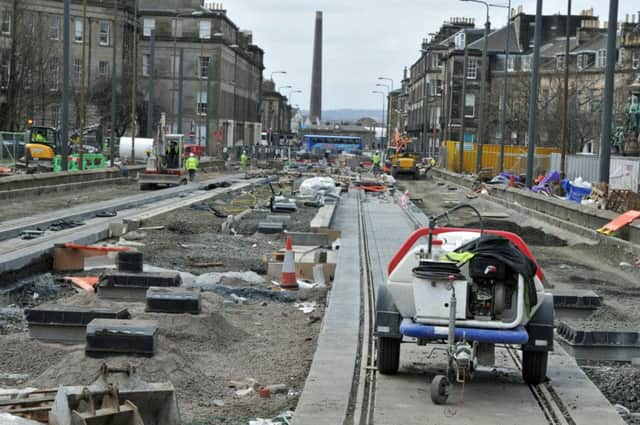Transport body '˜not given full picture' on tram project


John Ramsay said the problem dated back “many years” and that information provided by the arm’s length company was regarded at times as “wrong and inaccurate”.
Mr Ramsay worked on the tram venture as a project manager from 2005 until 2013 as part of his employment within Transport Scotland’s rail division.
Advertisement
Hide AdAdvertisement
Hide AdHe also continued as the main point of contact within Transport Scotland – which put £500 million into the project – after it withdrew from the scheme’s governance in 2007.
The inquiry heard Mr Ramsay had concerns about the way the Tram Project Board – upon which Transport Scotland had a seat until its withdrawal – was able to deal with information provided by TIE. “I had a continuing problem with TIE going back over the years,” he said.
“I felt – and others agreed with me – that the information they were supplying on a monthly, or four-weekly basis I should say, was sometimes open to easy misinterpretation, and other times we felt was wrong and inaccurate.
“We had a continual struggle on our hands to get from TIE the reality of the picture that was developing year by year, month by month.”
Advertisement
Hide AdAdvertisement
Hide AdMr Ramsay said the problems dated back to around 2005, when the project was still in its early stages. The attempts of more senior officials to improve things were all to “no avail”, he added.
“It took me a while to appreciate that there was a subtlety about the information that was being supplied.
“It was also the case that when Transport Scotland employed KPMG as our financial consultants, in the run-up to the development of the Business Case, we began to hear from them similar concerns about what they felt were subtle points of differences being applied at various times in various documents.
“We weren’t sure, even from 2006-7, that we were actually seeing the full picture being presented by TIE.”
Advertisement
Hide AdAdvertisement
Hide AdMr Ramsay was one of three Transport Scotland officials to give evidence yesterday as the inquiry, chaired by former Lord Advocate Lord Hardie, moves through its fourth week.
He was preceded at the inquiry by William Reeve, who is currently director of rail at Transport Scotland. Mr Reeve was involved in the tram project from 2005 until 2010.
Questioned by inquiry counsel Jonathan Lake about the project’s governance, Mr Reeve said he was content with the decision to use an arm’s length company to deliver the project.
He said doing so was not an uncommon arrangement on other similar projects.
Advertisement
Hide AdAdvertisement
Hide AdThe inquiry heard that, prior to the trams, TIE was involved in delivering the Stirling-Alloa-Kincardine railway line on behalf of Clackmannanshire Council.
However in around 2007 the project was taken off TIE and put back under Transport Scotland’s control in the face of “substantial difficulties” in delivering the project.
Asked if this had prompted concern over TIE’s ability to deliver such a large project, Mr Reeve said the context of the railway project was different as it concerned the delivery of an infrastructure on an asset owned by Network Rail.
Also giving evidence was ex-Transport Scotland official Ainslie McLaughlin, now director of procurement and commercial with the Scottish Government.
Advertisement
Hide AdAdvertisement
Hide AdThe inquiry was read an e-mail from Mr McLaughlin, dated October 5, 2010 and sent to Mr Reeve and David Middleton, then Transport Scotland chief executive.
It followed an initial message from Mr Middleton which read: “But if we, like other sane onlookers, knew that the project itself was not progressing, what is our defence for continuing to pay out money?”
In his response, Mr McLaughlin wrote: “It may well come out in the wash that having the major funding party remote from the decision-making and management of the contract is not a sensible way to manage projects like this in the future.”
The inquiry continues today.